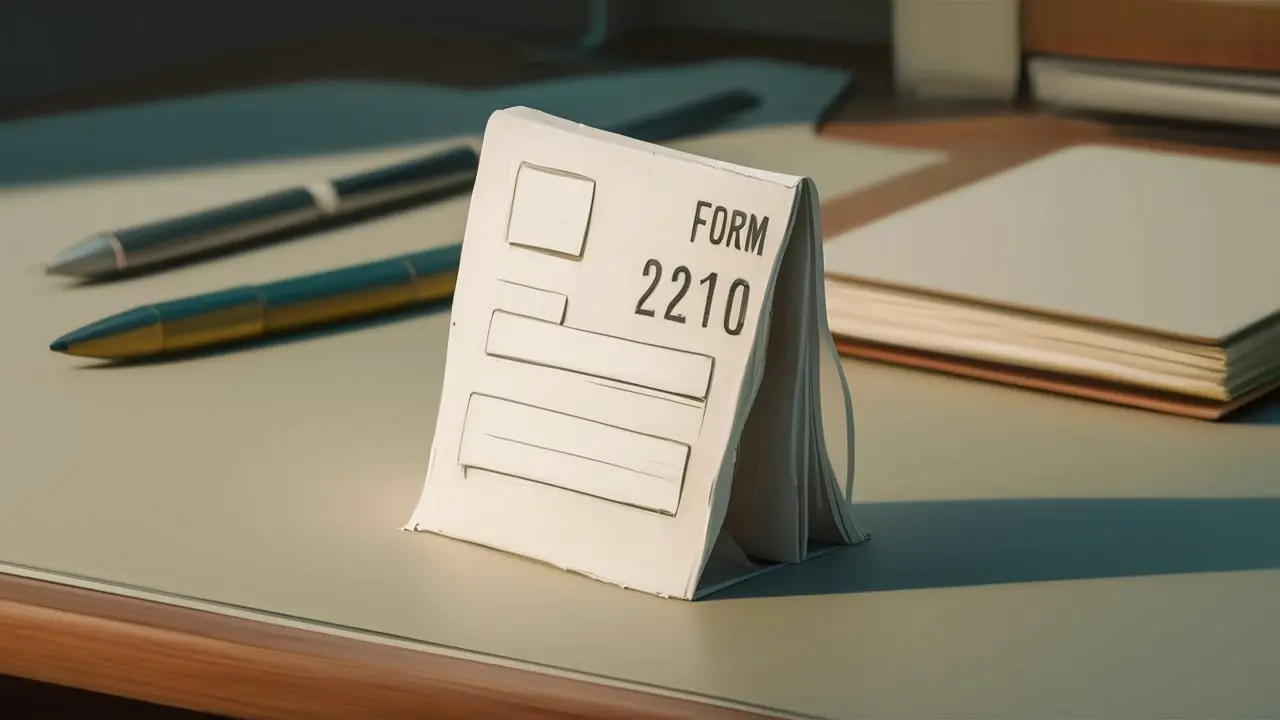What is Form 2210: Calculating Underpayment of Estimated Tax

Introduction
To prevent underpayment penalties, the IRS mandates many taxpayers to estimate their taxes quarterly. The IRS form 2210 lets you ascertain if you have paid enough estimated taxes for the year and, should you not, the degree of underpayment penalty you may be liable for. The following topics will be covered in this blog: Form 2210, who could be obliged to file it, how the underpayment penalty is calculated, and how to prevent it.
What is Form 2210?
Designated form 2210, your completed form is further referred to as "Underpayment of Estimated Tax by Individuals, Estates, and Trusts". It is loaded with your yearly personal tax return, Form 1040. Form 2210 is used to ascertain whether the taxpayer is to pay an underpayment penalty for the failure to pay sufficient estimated tax for the year and if it is so to calculate the amount of such penalty. This underpayment penalty so can be observed to operate in a way comparable to an interest being charged on the tax amounts you have avoided paying.
Any company that alters its excise tax records or does other account modification uses Form 2210.
Generally speaking, you should file Form 2210 if all of the following describe you:
You failed to contribute enough to estimated taxes during the current tax year to satisfy any of the exacting safe harbor standards the IRS has set (which we discuss more below). Estimated tax payments are paid if, for the previous year, you are expected to owe more than $1,000 when filing a tax return.
This implies that you are not eligible to satisfy any of the exemptions allowing you to avoid the penalty.
Some unique regulations let some taxpayers avoid Form 2210 if the IRS bases the penalty computation on information included in the return. Usually, though, showing Form 2210 helps you to either minimize or perhaps completely offset the penalty.
Let's first consider the penalty that results from additional tax withheld to help one grasp how the underpayment penalty is computed.
The IRS would penalize you by adding interest on the amount you should have been paying depending on the expected taxes annually if you are required to pay them but you could not do it properly throughout the year. The fluctuating "i" is three percent plus the federal short-term interest rate.
The IRS has various "safe harbor" regulations whereby, should you pay that threshold amount in anticipated taxes, you will not be liable for a penalty regardless of the actual amount owing:
1. Pay 100% tax for the current fiscal year to completely pay your taxes.
2. This means one pays, a hundred percent of the outstanding tax from the past year.
3. Pay taxes for the current year at 90 percent of the bureau's overall levy.
Should you not satisfy any of the safe harbor payment requirements, form 2210 can help you determine the projected quarterly tax amount due. It then increases whatever is owed for interest for any underpayment by the number of quarters and totals the results.
Form 2210 offers two ways to figure this penalty:
1. The penalty is computed straight using the usual approach for underpayments.
2. Using the annualized approach allows one to get a lesser penalty for taxpayers with notable annual income swings.
It helps you to select the one that, after the specified form, results in the lowest penalty total.
Advice on how to prevent being fined for underpayment.
These suggestions help you stay free from paying an expected tax underpayment penalty:
Make sure you review your previous year's tax return even if you have not specified quarterly projected payments.
If certain taxes are not needed or other payments can be cut, think about mid-year changes.
Should the income vary significantly between the quarters, the yearly installment approach on Form 2210 is more appropriate.
Overpaying a small amount to be safe makes logical as well; any overpayments are refunded.
In this situation, it is advised that one, when computing the appropriate expected payments, speak with a tax consultant.
Conclusion
Usually, the Form 2210 for every tax year and the projected tax obligations might also be confusing. Although this might not be general information, taxpayers should at least be aware of the fundamental objective and penalty points to avoid expensive underpayment fines. Implementing the guidelines provided by the IRS safely harbors and getting help where needed is quite vital in avoiding the trap that former and current income sources create. Please let us know should you have any more questions regarding projected taxes or Form 2210 completion guidelines.
Contact us here for Accounting services now!
